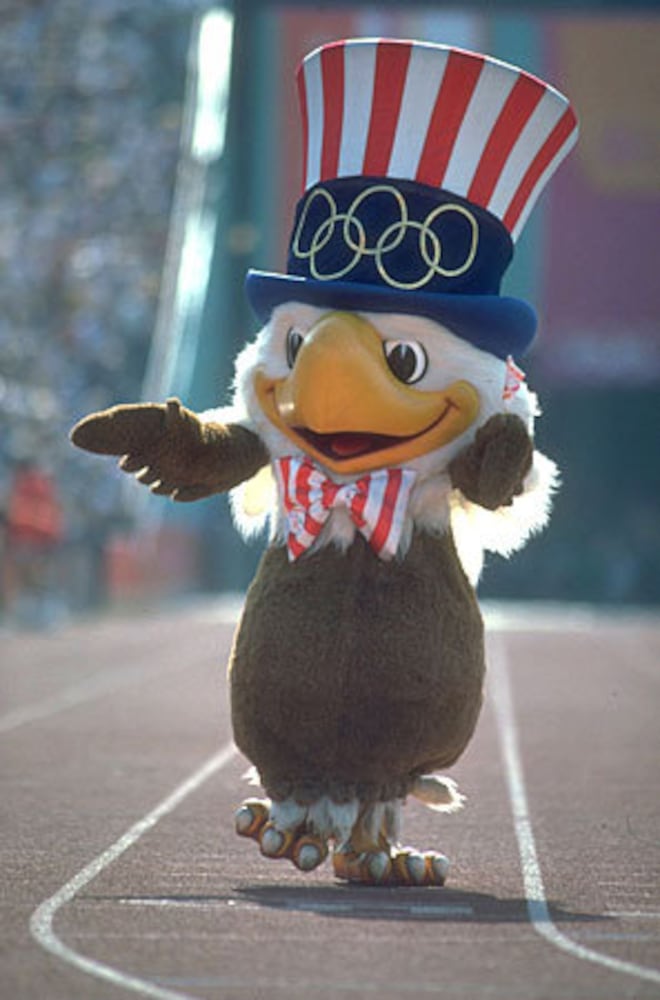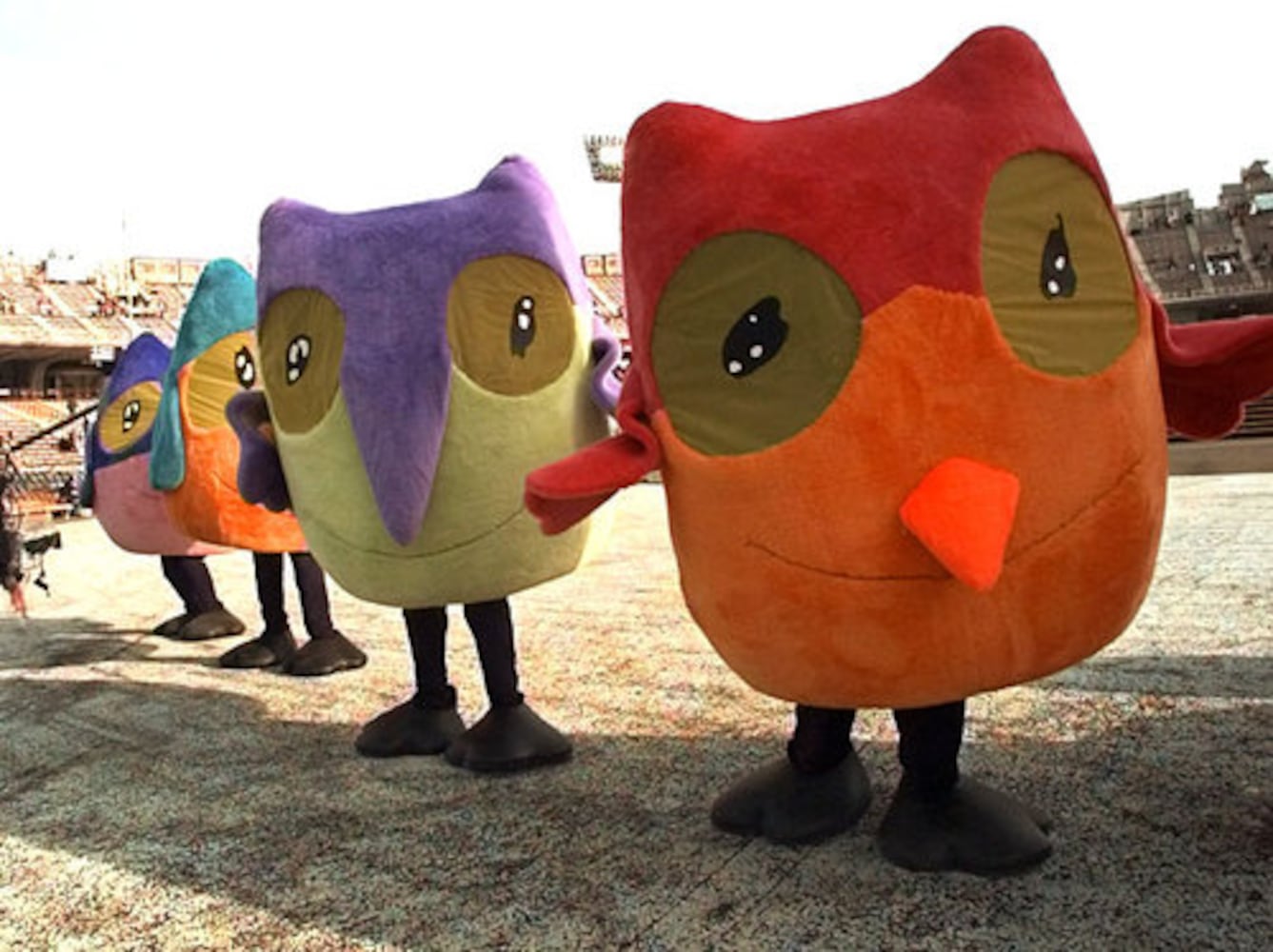New Coke. I-285 during rush hour. Sugar in grits. Whatizit. Bing Dwen Dwen. One of these things is not like the others.
Bing Dwen Dwen, the smiling ice-clad panda mascot of the 2022 Beijing Winter Olympics, is popular.
Olympic mascots first hit the scene at the 1968 Grenoble Winter Games with Shuss, a cartoon character resembling a beet with snow skis that was designed on one night.
Bing, chosen out of more than 5,800 mascot designs submitted to Beijing organizers, is beloved by those seeking souvenirs from the Games. Then there’s Atlanta’s Whatizit, who debuted nearly 30 years ago towards the end of the 1992 Barcelona Summer Olympics and immediately inspired criticism, particularly among locals.
“Talk about adding insult to injury,” the Journal-Constitution’s visual arts critic, Catherine Fox, wrote in a scathing Aug. 11, 1992, review. “After a week of wondering how Atlanta is going to match Barcelona’s rich visual and historic character, we unveil our 1996 Olympics mascot, and we get… an embarrassing commercial-looking thingamajig, aptly named Whatizit.”
“What it isn’t is Atlanta,” Fox told readers.
>> MORE DEJA NEWS: Check out what we’ve covered before (and again)
“The idea was to inspire the imagination,” Whatizit’s creator, John Ryan, told the Journal’s David Pendered, explaining how he crafted the morphing blue blob on his personal computer. Based on responses to an AJC call-in line asking for opinions about Ryan’s winning design, readers imagined the worst about Whatizit by a 3-to-1 margin and were inspired to see who could most creatively diss the grinning anthropomorphic… whatever.
“I know we’re in the South, but why do we have a roach for a mascot?” Eric Schulman of Marietta asked.
Holly Beth Anderson of Atlanta was blunt in her assessment. “It looks like a worm,” she remarked. And Max Clore of Atlanta was disappointed in what he viewed as local Olympic organizers’ failings.
“I think if this is representative of what we’re going to expect out of (the Atlanta Committee for the Olympic Games), we’re in big trouble,” he said.
Credit: AJC Print Archives
Credit: AJC Print Archives
ACOG received more than 1,000 mascot suggestions for the 1996 Games before eventually selecting Whatizit, “the result of a national design contest won by an Atlanta firm, DESIGNefx,” AJC reporter Melissa Turner wrote in an Aug. 1992 explainer detailing the blue blob’s origins. “Once Whatizit was selected in mid-May, it became the most closely guarded secret in Olympic history.”
Whatizit, who later went by “Izzy” in a mascot protection program, had fans in those who liked the unusual design and the character was a hit with children. Another supporter was ACOG President Billy Payne, who championed the idea of an untraditional Olympic mascot. Meanwhile, Ryan steadfastly and cheerfully defended his creation, choosing to view the clamor over Whatizit in a positive manner.
“It means to me that people are excited about it,” he told Journal readers in the Pendered interview. “People are having fun with it, and I was having a blast just listening to what people have come up with to describe it.”
Ryan’s boss echoed the designer’s glass-half-full view, doubling-down on the idea that even negative responses to Whatizit meant Atlantans were keeping the grinning, star-tailed character in mind.
“We kind of like the fact that it’s controversial,” Charlie Willis, vice president of DESIGNefx, told the AJC. “We think it’ll get a lot of attention.”
Credit: AJC Print Archives
Credit: AJC Print Archives
ABOUT DEJA NEWS
In this series, we scour the AJC archives for the most interesting news from days gone by, show you the original front page and update the story.
If you have a story you’d like researched and featured in AJC Deja News, send an email with as much information as you know. Email: malbright@ajc.com. Use the subject line “AJC Deja News.”
About the Author
The Latest
Featured














